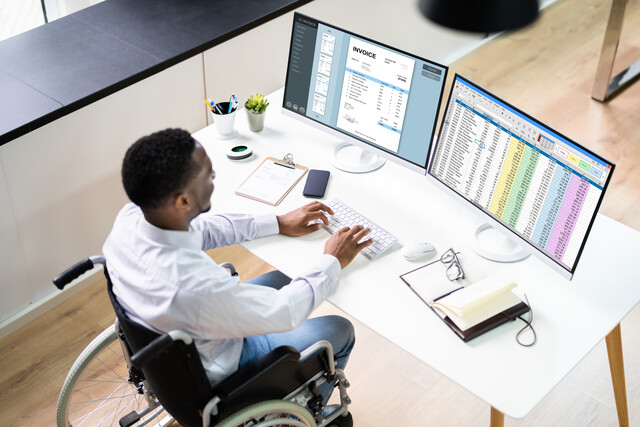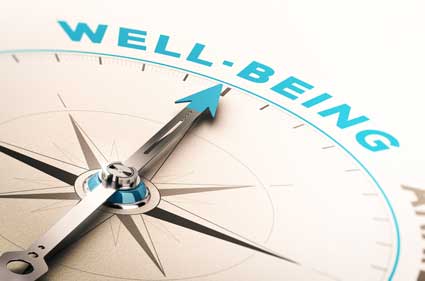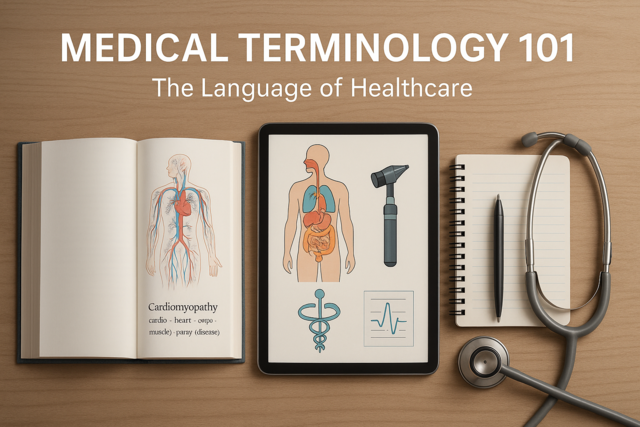A caring, friendly NA with an upbeat attitude can make all the difference in a patient's life. ADL care refers to "Activities of Daily Living," and includes bathing, washing, shaving, grooming, and dressing. Assisting with ADL activities is one of the primary responsibilities you will have as a nursing assistant.
There are three key words to keep in mind at all times during ADL procedures: comfort, safety and dignity. Put yourself in the place of your patient -- someone else has to help you bathe or wash, help shampoo your hair and shave you. Can you imagine how nervous you would be the first time you had to put any of these highly personal functions into someone else's hands? Treat your patient like you would want to be treated, or how you would like someone to treat your father or mother if they were in need of assistance.
Comfort includes checking the temperature of the water before bathing, ensuring that the razor is sharp and clean before shaving and taking any other steps needed to make personal hygiene a pleasant experience. Sometimes you will be assisting a patient who has severe limitations; this can be a challenging task.
- Don't begin a new task without first telling your patient.
- Talk to your patient in a soothing, conversational voice while doing such tasks as bathing, shampooing or shaving to put them at ease.
- Do not take over a task completely if the patient is capable of assisting. Part of making a patient comfortable is understanding how much they can or can't do -- if you don't allow them to do what they can, you are taking away the little bit of autonomy they have.
- Remember to use products that the patient prefers whenever possible. If your patient has scented soaps or lotions, use these rather than those issued by the facility. It will make her feel special and she will appreciate the personal touch.
- Little extras can make all the difference. When brushing a patient's hair, ask her if she would prefer to wear it pulled back or if she has a hair clip that she wants to wear that day, etc. Doing the same thing day after day becomes routine and she will begin to feel like you aren't really "seeing" her.
- When bathing, be sure that you ask your patient frequently if the water temperature is still comfortable. Water in a basin cools quickly, and what felt comfortable when you started may give her goose bumps before you are finished.
Safety covers a multitude of possible situations during ADL's. From assisting a patient in the shower to trimming nails, you must use a gentle touch and clean, hygienic tools at all times.
- To prevent spreading germs and fungal infections, finger and toe nails should be trimmed with clippers that have been properly sterilized between each patient. Always trim straight across, not at an angle, to prevent ingrown nails.
- Moisturize skin after bathing to prevent dryness and itching. Dry skin that is scratched and irritated can develop into more serious skin conditions.
- Be sure to use proper mobility and support procedures if you are assisting a patient in the shower. It is common for patients to easily become dizzy in a warm, steamy environment. In addition, shower stall floors are very slippery and can cause falls.
- If there is a problem or possible safety issue, summon assistance immediately. This includes a fall, injury or the patient becoming agitated or fearful.
Patient Dignity must always be maintained. Patients who can no longer bathe themselves or take care of simple grooming tasks such as brushing their hair or putting on makeup frequently feel embarrassed by their inability to be independent. A reassuring and matter-of-fact manner that doesn't patronize your patient is the best approach. Interacting during any grooming is also important so that the patient doesn't feel that they are being cared for like an infant.
When a bed-ridden patient has to be bathed, be sure to cover each section of the body as soon as you are done bathing it. There is nothing that is as undignified as the feeling of having your nudity exposed to the world. Bathe each section of the body separately, and then cover that area with clean sheets or towels for both warmth and modesty.
During any ADL's that are of a personal nature, maintain as much privacy as possible. If the patient is in a private room, close the door. If it is a shared room, always pull the curtain around the bed and be sure that others do not intrude during bathing, use of the bedpan, grooming or dressing activities.
Dressing
Do not simply reach into your patient's closet or drawer and pull out the first outfit. Ask for input from your patient. Is there a particular outfit she would like to wear? Will she be getting any special visitors today, or will she be going to one of the special events at the facility? Remember, appearance can be central to how an individual feels about herself. If your patient has a preference, respect it.
Keep in mind that a patient should help as much as possible with every activity. If one side of the body is weak, dress that side first so that the patient can assist you as much as she can. When undressing, remove clothes from the stronger side first so that she can then help with undressing the weaker side.
Does your patient wear glasses? Clean them for her each day if she finds this difficult. This only takes a few seconds, but is often forgotten when there are many patients to care for. Make sure her blouse is fastened correctly, adjust collars, waistbands and stockings, etc. for comfort and attractiveness. There is nothing worse than simply being quickly stuffed into your clothing -- dress each patient with as much care as you dress yourself each morning.
Part of proper care when attending to ADL's is addressing all of the needs of each patient. Remember, the patient's rights include "the right to personal dignity, respect and recognition of individuality." If your patient would like to wear a bit of makeup each day and it has been approved by her doctor, you can not refuse to assist her on the grounds that you don't have the time to do so. This is as much an accepted part of grooming as shaving for men and proper hair care for all patients. It is how your patient expresses individuality and is a part of her grooming routine.
Feeding
Nursing Assistants should assist patients with eating and drinking only to the point that the patient cannot do so herself. Whether you take your patient to a communal dining area or she dines in her room, you should provide enough assistance to make sure she is able to eat a full meal easily, but not so much that she does not have to do anything that she is capable of herself.
The laws governing nursing assistants vary from state to state, but there are a few things that are the same no matter where you live or work. In the majority of states, you can find work much more quickly and will get a higher wage if you are a certified nursing assistant, or CAN. To become certified, most states require that you pass a state exam. Courses to prepare you for the exam are offered through local Red Cross branches, some hospitals and some long term care facilities. The federal guidelines require that all nursing assistants have at least 75 hours of training; some states require even more.
The state licensing board usually gives an exam split into two parts. The first part of the exam is written and tests the candidate on their overall knowledge. The second part of the exam is clinical and evaluates how well the candidate performs specific duties. The clinical section is usually the most difficult because the candidate is being monitored closely for every detail. For instance, if you are asked to demonstrate how to properly administer a bedpan, be sure you do not leave out essential steps such as pulling the privacy curtain around the patient, asking if he is comfortable and allowing him to wash his hands afterward, and then washing your own hands after you've completed the entire procedure.
The clinical exam (also sometimes called a practical exam) will focus heavily on your skills as well as your sense of patient dignity, respect for privacy and attention to all aspects of patient safety. Do not rush when taking the exam -- you are more likely to leave something out. Remember, the practical exam is not a timed test and you will not get extra credit for finishing early.
In many states, you will be able to work for up to four months while waiting for your test results and certification. Check with your state's health department for more information on specific policies, the name and location of the licensing agency and how to find a course and exam location in your area.
The Health Care Team
There are federal regulations concerning the size of the nursing staff required in facilities such as hospitals, nursing homes and hospice facilities. In most cases, individual states also have requirements that meet or exceed the federal guidelines. One of the most important federal regulations is the requirement that in a nursing home environment, a licensed nurse must be on duty at all times, 24 hours a day, seven days a week.
A health care team at a hospital is generally headed by the doctor in charge of the individual patient. While he or she may see the patient periodically to check on progress and perform particular procedures, the doctor will not necessarily see the patient as often as the nursing staff. The nurse assigned to a patient will facilitate the care of each patient in accordance with the doctor's orders, deliver any medications and provide instructions to the rest of the team, which may include a therapist (physical, psychological or family), social worker, nutritionist and the nursing assistant. The exact members of a particular patient's health team will vary from patient to patient in a hospital or clinic environment.
Nursing homes generally have the same structure for all patients, with the charge nurse being the key authority figure. Typically, the personalphysicians of each patient either visit the facility or make arrangements to have their patients brought to them. If a patient requires more intensive care, they can be transferred to a hospital and into the direct care of their doctor or a staff physician at that time.
Nursing assistants in any employment situation report directly to the nurse in charge for instructions and to report any potential problems or emergencies. Dieticians, therapists and other health care professionals also report either to the charge nurse or a doctor.
You are an essential part of the health care team in any environment because you are the individual who interacts most closely with the patients. In addition to assisting them with ADL's and recording vital signs, you are the primary source of contact between the patient and the rest of the health care team. If the patient has questions or concerns, you have a responsibility to relay those concerns to your superior and see that any questions are answered for your patient.
If you are unsure about a procedure or how to handle a particular situation, it is very important that you go directly to the charge nurse to whom you regularly report or the nurse on duty. Do not ever turn to another nursing assistant for advice or direction. Other CNA's don't have the authority to advise you, and if they give you incorrect advice or direction, you could be held responsible for a tragic mistake.
Protecting yourself from liability
Nursing assistants, like all medical professionals, must carry medical liability insurance to work in most facilities, including working as a home health aide. In the event someone is injured or becomes ill as a direct result of your actions, your medical liability insurance will pay for the damages so that you do not lose your savings and other assets.
If you follow the rules of the facility properly and keep yourself up-to-date on patient care, you will probably never face a liability issue, but it is best to be protected. One way to pro-actively protect yourself is to make certain that you always understand each and every direction and follow it precisely.
Be sure you understand what the law permits you to do and what it prohibits you from doing in your role as a nursing assistant. While most facilities adhere to a strict code of conduct, you may find yourself in a situation where you are asked to perform a task that is not within the scope of a nursing assistant's expertise. Do not make the mistake of assuming this kind of responsibility. If a licensed or registered nurse asks you to perform a task that they should be performing (for instance, giving injections of prescription medications on your rounds), you have the right (and the obligation) to refuse. Performing any tasks for which you are not certified can mean the revocation of your certification as well as additional charges.
Reporting Abuse or Neglect
A nursing assistant must protect the well-being of every person entrusted to her care. This includes not only performing your duties, but being sure that others are performing their duties in a responsible and respectful manner. If you witness signs of abuse or neglect, you must follow the appropriate steps to protect the patient.
Most facilities have a policy for reporting suspected abuse or inappropriate behavior. If you suspect another CNA or nurse is abusing a patient, you will most likely be expected to report this directly to the charge nurse. If you suspect abuse by the charge nurse, you should move up the chain of command to the Director of Nursing or the charge nurse's superior.
If you don't feel the situation has been addressed properly at this point, check to see if there is a hotline telephone number posted in your facility. Most nursing homes, hospices and assisted living facilities now have 800 numbers you can call to anonymously report abuse or neglect.
How do you know what is an abusive or neglectful situation? As you become more experienced as a nursing assistant you will be able to quickly spot even subtle signs of abuse or neglect in your patients. Do not rely on the complaints of your patients -- fear is a powerful motivator, and if a patient is afraid of an abuser, he or she will suffer in silence. Some patients who are abused or neglected also fear that they will have to leave the facility. If they have nowhere else to go, they may have convinced themselves that being abused is better than being "homeless." Of course, social workers make sure that this does not happen, but many elderly patients do not understand this.
Signs of Abuse and Neglect
Abuse is an active activity -- actively hurting or injuring a patient, whether physically, sexually or verbally. Abuse does not have to leave physical evidence. In fact, emotional and mental scars can be far more damaging in the long term. Insulting, degrading or embarrassing a patient are all every bit as abusive as hitting or pinching a patient.
Neglect is the failure to take action. Neglecting a patient is the act of withholding treatment, failing to provide assistance when needed or allowing the patient to suffer when action would have provided comfort.
Although we cannot list every form of abuse there is, the examples below will give you some idea of what is considered patient abuse and/or neglect:
Physical Abuse
Hitting, Pinching, Kicking
Squeezing, Poking, Pushing
Roughness, Force-feeding, Overuse of physical restraints
Restraints used without doctor's orders
Emotional/Verbal Abuse
Threats of any kind
Demeaning or insulting comments
Frightening the patient
Not alleviating fears
Swearing at the patient
Yelling at the patient
Racial insults or jokes
Making light of or ignoring a patient's requests or concerns
Public humiliation or discipline designed to embarrass the patient
Sexual Abuse
Sexual abuse is defined as any type of sexual or inappropriate contact, including touching, fondling or handling breasts or genitalia of male or female patients. It's important to know that it is sexual abuse even if the patient has "consented." As a health care professional, it is neveracceptable to be intimately involved in any way with a patient. Regardless of the fact that there are two consenting adults involved, if one is the patient and the other a caregiver, it is against the rules of ethics.
Sexual harassment is defined as inappropriate conversation including sexual jokes and sexist or sexually insulting comments.




























